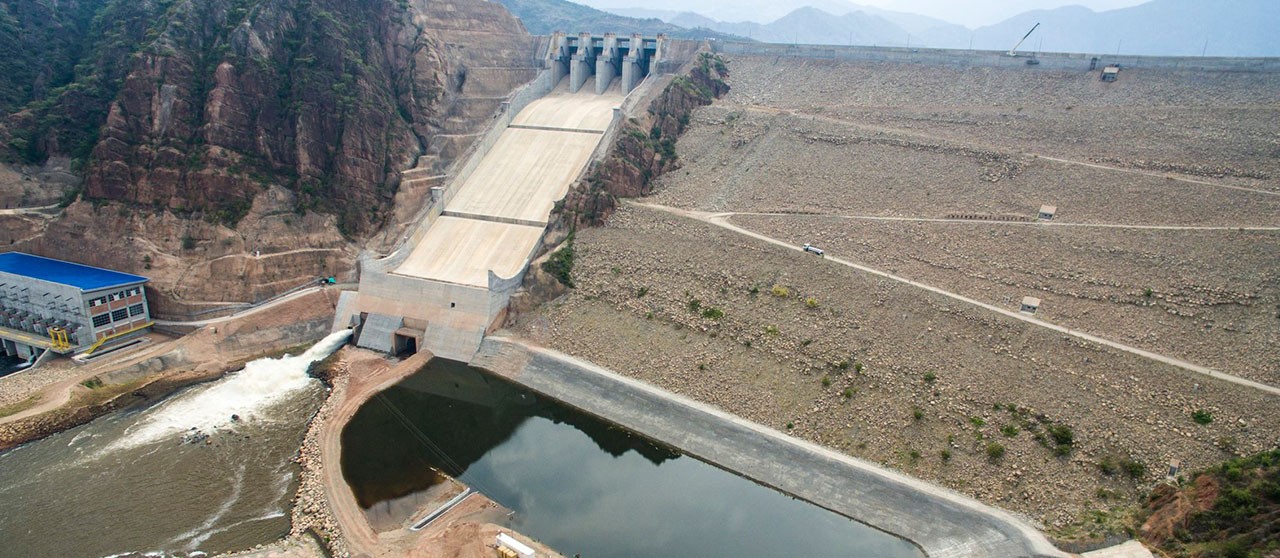A week after having restarted operations of the El Quimbo Hydroelectric Power Plant, the balance is still positive, both in terms of the energy demand of the country, as well as for fish farming in the Betania Reservoir.
During these seven days the generation has been kept within the defined average, oxygen levels have been above the requirements of environmental legislation and the entry flows to Betania have been at appropriate levels, despite the fact that the flow of the Páez River fell by 40% over the last week.
This has allowed for energy to be provided to the country and to ensure that the water in the reservoir during the days whilst the El Quimbo plant was not operating had no impact on fish farming in Betania.
Stable and controlled power generation
The power generation for the first five days averaged 84 MW/h. During the last two days the company has been gradually increasing said power generation achieving an average of 100 MW/h, always monitoring to ensure that such increases do not have significant effects in the quality nor in the level of the dissolved oxygen of the water that arrives in Betania.
Adecuate oxygen levels have been maintained
In accordance with the water quality monitoring procedures carried out continuously, six times a day, in four water points downstream of the El Quimbo power plant, the oxygen dissolved at the Betania entry point maintains an average of 4.73 mg/l (milligrams per liter).
No fish have died in Betania
During the seven days that the El Quimbo power plant has been operating, there have been no fish deaths in the Betania Reservoir related to the plant’s operations.
One point where monitoring takes place is at the section where the waters of the Magdalena and Páez rivers converge. In this period it was reported that there were 576 dead fish whose weight did not exceed 7 kilos (most of them small, with average lengths of 2 to 9 cm). Whilst the company seeks to avoid this occurrence at all costs, this figure is within the expected effects due to the long period of water stagnation in the time the plant’s was not able to operate.
Compliance with entry flows to Betania as recommended by the authorities
Operation at El Quimbo plant has generated a water discharge of 150 m3/s, composed of 110 m3/s of generation and 40 m3/s of ecological flow. This figure, added to what the tributaries contribute, has meant that the minimum entry flow to the Betania Reservoir as recommended by environmental authorities has been maintained over these seven days.
Controlled odors
The odors in the bordering areas remain practically imperceptible. Some odors have appeared in the operation area at the exit of the machinery room. This is where the water first flows after energy generation. There is no impact on the communities as the sector is uninhabited. Additionally, and as was previously reported by Emgesa, these odors will dissipate as operation continues and the reservoir water is renewed.
“The company will continue to carry out a process of responsible generation that will gradually allow for a stabilization of the El Quimbo Reservoir. We hope to continue to provide energy to the national electricity system, maintain water quality conditions and take measures to contribute to the mitigation of potential effects on fish farming in Betania”
El Quimbo Hydroelectric Power Plant, built by Emgesa in the Department of Huila, will be a single-purpose reservoir with an installed capacity of 400 MW and an average generation of 2,216 GWh/year. Encompassing an area of 8,586 Ha, this power plant supplies 5% of Colombia's energy demand with its start up. El Quimbo Power Plant's direct area of influence is in the municipalities of Gigante, Garzón, Altamira, Paicol, El Agrado and Tesalia. With an estimated investment of USD 1,200 million, it uses water from the Suaza and Magdalena Rivers.

